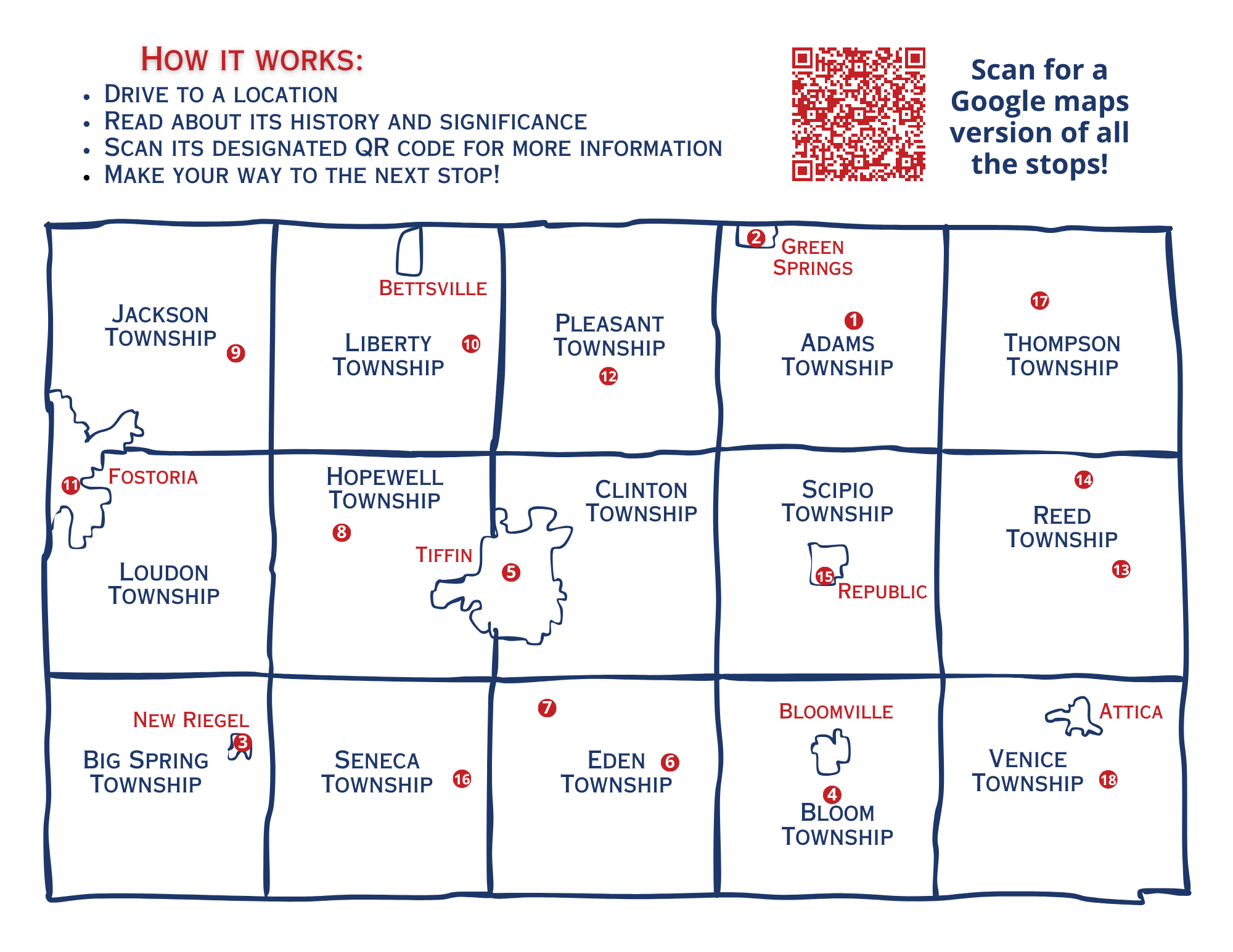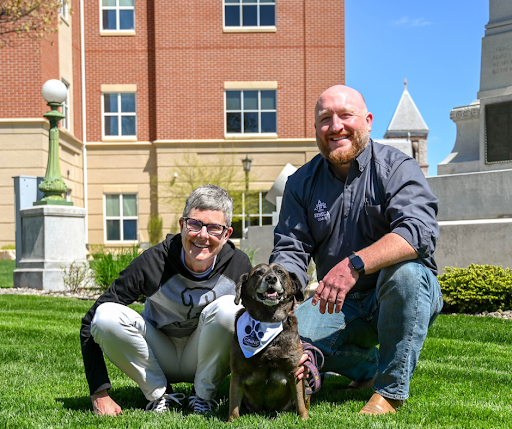Seneca County Bicentennial

Welcome to the official page for everything related to the Seneca County Bicentennial, taking place in 2024! Please explore to learn about the rich history of our community and how Seneca County has stood the test of time. Be sure to join us for signature bicentennial events being held throughout the bicentennial year and take part in the special offers that will be announced soon! Check it out!
Bicentennial Events

Official Kickoff Event: April 1, 2024: 10am, Seneca County Museum

Seneca County Solar Eclipse of the Heart: April 5-8, 2024

Be a Tourist In Your Own Town: April 19-21, 2024

Tiffin-Seneca Heritage Festival & Parade: September 20-22, 2024

More celebratory events coming soon and will be added here and on the Facebook page, stay tuned!
Contests & Offerings
We want everyone to be apart of celebrating 200 years of Seneca County! Take a look below for great ways to get involved and be on the lookout as more are added!
Secrets of Seneca County Historical Driving Tour

Seneca County’s greatest secrets await you on the Secrets of Seneca County Historical Driving Tour! In honor of the county’s bicentennial, this driving tour will take throughout all of Seneca County to explore its rich history, fascinating facts, beautiful landscapes, and more!


About The Featured Stops
Click on the locations below to learn more information about them and to get their detailed GPS address!

Canine Commissioner

We are so excited to announce the Seneca County Bicentennial Canine Commissioner, Halo! Thank you to everyone who submitted their furry friends and all who voted. The canine candidates received over 9,500 votes form the community and Halo came out on top! Learn more here.

Beard Contest
When Seneca County celebrated the sesquicentennial (150 years), the community celebrated with an official beard contest. For 200 years, we are bringing this fun (and hairy) tradition back! Winners have been announced! Congratulations to all and thank you to all who voted, participated, and supported this fun contest!
History of Seneca County
The Native American inhabitants of what is today Seneca County were established here before Columbus arrived in the New World. Initially, there were the mysterious mound builders, followed later by the Senecas and Wyandots. Whites began arriving during and after the War of 1812. Many were squatters who staked out land claims in anticipation of government surveys opening the heretofore unsettled area of northwestern Ohio following the war.
The first permanent white presence was Fort Ball, a military depot established by General William Henry Harrison in July of 1813. It was located on the west bank of the Sandusky River along Frost Parkway near the foot of Miami Street. No fighting took place here, but its location along the river and near a freshwater spring enticed Erastus Bowe to build a tavern there in 1817, which he called the Pan Yan. It was located along the Old Military Highway that had connected Franklinton (Columbus) with Lower Sandusky (Fremont) and soon became a stagecoach stop, as well as a post office. This activity drew more settlers and soon the village of Oakley was established. It later took the name Fort Ball in honor of the fort that previously stood there.
In 1820, Josiah Hedges purchased land across the river from Fort Ball. It too drew settlers, but not as many. This community took the name of Tiffin after Edward Tiffin, one of the champions for Ohio statehood and later elected its first governor. Although smaller, Tiffin surprisingly was designated as the county seat of the county then under development. This county, named Seneca for one of the original tribes, finally was created by the Ohio legislature in 1824. April 1 of that year marked its official beginning.
Initially, Fort Ball and Tiffin competed for settlers and commerce, but quickly realized that their common interests were best served by working together. Thus, Fort Ball became part of Tiffin. The surrounding county also began to develop. The dense forested areas were cleared, exposing a rich, moist soil perfect of agricultural activities. Also, beginning in 1831 all the Native Americans in the region were forcibly removed to the Trans-Mississippi west. Finally, the government surveys, now completed, divided the land into designated, easily transferable tracts. Together, these developments attracted a growing number of people seeking opportunity. While most were traditional Americans, many were newly arrived immigrants from Europe, primarily from Germany. Farming quickly became the heart of the county’s economy. Vast deposits of limestone, important for buildings and the production of iron, created another business opportunity. Soon new communities emerged in the county to serve this growing population of nearby farmers and quarry workers, places like Bloomville, New Riegel, Republic, Bettsville, and others.
Agriculture spurred ancillary commercial activity throughout the county. Grist mills, tanneries, and breweries proliferated, mostly in Tiffin and the smaller villages. Unfortunately, the Sandusky River was not navigable above Lower Sandusky (Fremont), which hampered the transportation of goods, particularly of any great distance. While a growing number of state and local roads helped, this limitation was only overcome with the completion of the Mad River and Lake Erie Railroad to Tiffin in 1841. As railroad lines grew, the production of Seneca County’s farmers and artisans gained an increasingly larger market. While agriculture remained the economic backbone of the county, the post-Civil War industrial revolution, much of it concentrated in the Midwest, also found its way to Seneca County. Companies like National Machinery, which relocated from Cleveland to Tiffin, opened operations here. This too attracted workers, many now from Italy. At the same time, educational institutions, such as the Seneca County Academy in Republic, Heidelberg College in Tiffin, and Tiffin University, gained regional recognition.
From the beginning, Seneca County has seen its share of catastrophes, such as cholera epidemics, destructive fires, devastating tornadoes, paralyzing blizzards, and fatal train wrecks. But probably nothing compared with the 1913 flood that swept the lives of entire families. Over the generations, the county also sent its sons off to war, where many sacrificed their lives in this service. One, Rodger Young from Adams Township, won the Medal of Honor during World War II. Nor has the county been spared the pain of economic hardship as technological innovation, foreign competition, and changing consumer tastes repeatedly have created challenges for residents. But throughout it all, the people of Seneca County have demonstrated the resilience and perseverance first seen in the county’s early settlers.
Stay Connected
Follow us on Facebook to stay up to date with all things regarding the bicentennial at: www.facebook.com/SenecaCounty200

Questions? Feel free to email us at info@destinationsenecacounty.org

